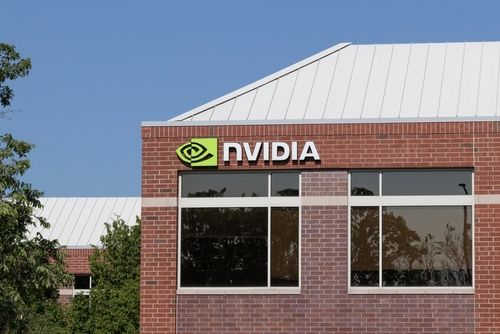Donald Trump Is the President-Elect -- but There's an Even Bigger Winner Today


For months, Election Day has loomed large for America, as well as Wall Street. Although not everything that happens in the White House or on Capitol Hill has a bearing on the stock market, the votes cast by Americans across our great country ultimately determines who'll be making our laws and shaping our fiscal policy in the years to come.
While the composition of Congress holds great importance, most people tend to focus on who wins the Oval Office. As of 5:42 a.m. ET, based on projections from the Associated Press (AP), former president and Republican Party presidential nominee Donald Trump has won the presidency.

Former President Donald Trump signing a bill in the Oval Office. Image source: Official White House Photo by Shealah Craighead.
Trump has reclaimed the White House
According to calls made by the AP early Wednesday, Donald Trump holds a 277-to-224 Electoral College vote lead over Vice President and Democratic Party presidential nominee Kamala Harris. Only 270 votes are needed to secure the win.
There are, admittedly, some campaign proposals from the former president that have economists and/or investors worried.
For example, Trump has proposed implementing tariffs on goods imported into the U.S. to promote domestic production and make American-made goods more price-competitive. More specifically, he's suggested that Chinese imports should face a 60% tariff, with a 20% tariff applied to other nations.
While this proposal may sound great on paper, there's the real risk that tariffs will drive up costs for American consumers and businesses, as well as worsen trade relations with the world's No. 2 economy, China, along with our allies.
On the other hand, investors had little to complain about during Trump's first term in the Oval Office. The iconic Dow Jones Industrial Average (DJINDICES: ^DJI), benchmark S&P 500 (SNPINDEX: ^GSPC), and innovation-driven Nasdaq Composite (NASDAQINDEX: ^IXIC) respectively gained 56%, 67%, and 138%.
With Republicans retaking the Senate and Trump victorious, the prospect of higher taxes for corporate America has been taken off the table. This more than likely paves the way for Wall Street's most influential businesses to continue their aggressive share-repurchase programs.
However, there's an even bigger winner tonight than President-Elect Donald Trump.

Image source: Getty Images.
Election Night yields an even bigger winner than Donald Trump
Although there are still seven Senate seats and 59 House races left for AP to call at the time of this writing, the undeniable winner of Election Night is Wall Street's investors.
A little over three years ago, Integrity Wealth Management president and Forbes contributor Mike Patton released a data set that examined the average annual return of the Dow Jones Industrial Average from 1946 through 2020 across various political scenarios. For instance, when Republicans control a majority of seats in the Senate, the Dow generated an average annual return of 11.3%! This is notably higher than the 6.3% average annual return when Democrats held control of the upper house of Congress.
Comparatively, Republican presidents have overseen an average annual return of 7.4% in the Dow over 75 years, which is modestly below the 9% annualized return Democratic presidents have delivered.
Here's the thing: No matter which party controlled the House, Senate, or White House, Patton's data set showed that average annual returns in the Dow ranged from 6.3% to as high as 12.9%.
The analysts at Retirement Researcher looked back even further with their analysis, which examined average annual returns for the S&P 500 from 1926 through 2023. In the 34 years where a Republican was president and Congress was divided between two parties, the S&P 500 averaged a 7.33% annual return. But in the 13 years where Republicans controlled both houses of Congress and the White House, the S&P 500 averaged an annual return of 14.52%.
While this data does show that, statistically, certain scenarios have historically been more beneficial to Wall Street than others, the most important takeaway is that stocks can perform well regardless of which party is in power or who wins the White House.
Perhaps the most telling of all investment studies comes courtesy of Crestmont Research. Every year, Crestmont updates a data set that examines the rolling 20-year total returns, including dividends paid, of the S&P 500, dating back to 1900. Even though the S&P didn't come into existence until 1923, researchers were able to trace its components to other indexes, thusly leading to 105 separate rolling 20-year periods (1919-2023).
What Crestmont Research found was that all 105 of these rolling 20-year periods generated a positive annualized total return. In plainer English, if you had, hypothetically, purchased an S&P 500 tracking index at any point since 1900 and held this position for 20 years, you made money 100% of the time.
What's more, you often made a lot of money. In more than half of the 105 rolling 20-year periods examined, the annualized total return clocked in at or above 9%.
Though elections are headline news, they get in the way of the real hero for Wall Street investors: time.







